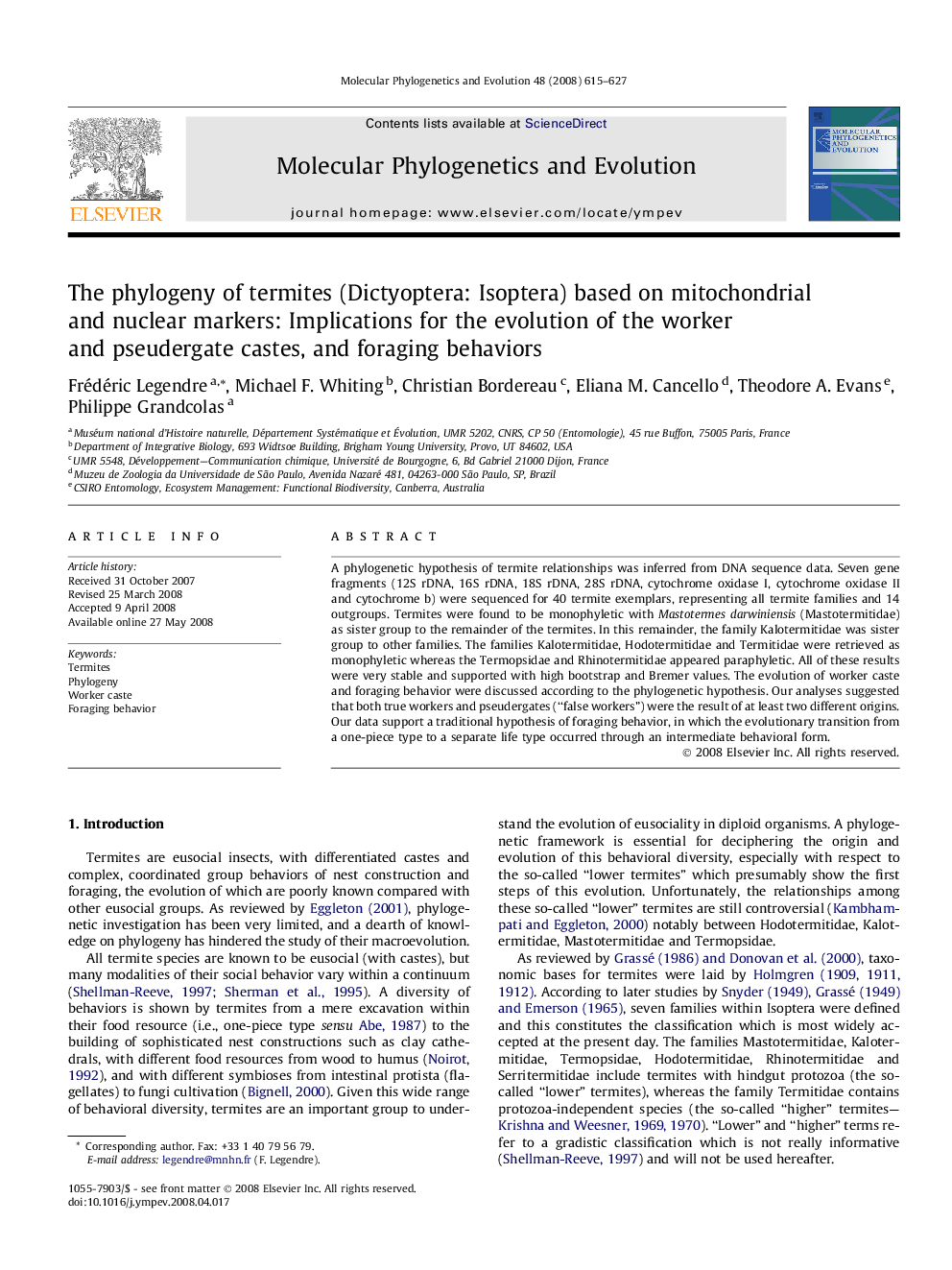| کد مقاله | کد نشریه | سال انتشار | مقاله انگلیسی | نسخه تمام متن |
|---|---|---|---|---|
| 2835087 | 1164332 | 2008 | 13 صفحه PDF | دانلود رایگان |

A phylogenetic hypothesis of termite relationships was inferred from DNA sequence data. Seven gene fragments (12S rDNA, 16S rDNA, 18S rDNA, 28S rDNA, cytochrome oxidase I, cytochrome oxidase II and cytochrome b) were sequenced for 40 termite exemplars, representing all termite families and 14 outgroups. Termites were found to be monophyletic with Mastotermes darwiniensis (Mastotermitidae) as sister group to the remainder of the termites. In this remainder, the family Kalotermitidae was sister group to other families. The families Kalotermitidae, Hodotermitidae and Termitidae were retrieved as monophyletic whereas the Termopsidae and Rhinotermitidae appeared paraphyletic. All of these results were very stable and supported with high bootstrap and Bremer values. The evolution of worker caste and foraging behavior were discussed according to the phylogenetic hypothesis. Our analyses suggested that both true workers and pseudergates (“false workers”) were the result of at least two different origins. Our data support a traditional hypothesis of foraging behavior, in which the evolutionary transition from a one-piece type to a separate life type occurred through an intermediate behavioral form.
Journal: Molecular Phylogenetics and Evolution - Volume 48, Issue 2, August 2008, Pages 615–627